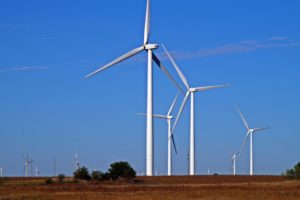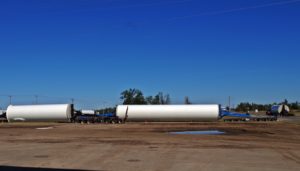The truth about the electric grid is that power cannot be stored with any efficiency. Wind and solar power are lame excuses which cannot deliver electricity when needed, only when the wind blows or the sun shines. Requiring utilities to take wind generated electricity destabilizes the grid.
Proponents claiming wind and solar can provide most of our electrical needs are ignorant of the way the grid and electricity works. A century ago electricity could be generated by wind, but was stored in wet cell batteries and used only to power a dim light or two or perhaps a radio. By midnight the power generated in a day was long exhausted and any light after that would have to be generated by a hand crank generator. Barely enough to charge today’s cell phone, it wasn’t going to come close to generating enough to power a television, refrigerator, or central heat and air.
Even in any “off the grid” application, the only way you have a refrigerator was using propane, something still used in small RVs to this day. Cooking by wood? Oh, we call that biomass. (below, my “biomass” processor runs on gasoline…I want the solar model.)
How ridiculous. Europe generates substantial electricity by avoiding coal only to burn wood instead. Not because wood does not pollute or emit carbon dioxide, rather because the EU has declared wood “carbon neutral”. Really. Then coal, which is only biomass as well, should be deemed carbon neutral. It is like pretending wine doesn’t come from grapes.
Wind and solar cover the high plains in ugly forests of hilltop white turbines whose synchronized nature blinks uniformly in red strobes throughout the night. It has turned the plains into a hideous bird killing mine field of subsidized wasted energy.
Energy is not readily stored. It can only be stored by siphoning off surplus generating capacity to pump water to higher elevations, then release as needed into the hydroelectric system. Power is regulated by turning on and off the generators in plants where base load and peak load can be controlled, otherwise known as hydroelectric or coal or natural gas fired plants. Wind is mandated to be purchased by the grid and they cannot pay for it, even if forced to idle the wind generator to avoid literally overheating the grid system, utilities must pay for that wind power, use it or not. And wind is, on average, higher at night than day, it generates at a time of day when it is not needed. Also, look at the photograph of the wind towers I took in Greensburg, Kansas in 2018. Do you think these are made from wood? Metal? Of course not. They are made from hydrocarbon-sourced materials. Never mind I have ignored the bird butchering aspects of wind generation. Go to western Oklahoma or Kansas and see if you find an raptors near these farms.
Solar, on the other hand, is more predictable in dry climates. But in all climates it can predictably be perfectly worthless after dark. In fact, as the sun rises, solar power slowly powers up to its mid-day peak. After that, it wanes with the setting sun and just as peak demand starts, solar stops.
As both solar and wind increase and are constructed courtesy of the taxpayers subsidy largess, the management of the grid becomes ever more difficult. And energy costs are doomed to track that of Europe where electricity is roughly three times more expensive for no other reason that to subsidize the construction of roof top solar, solar farms and wind farms. Take off all subsidies and no wind farms would be built and electricity costs will drop. Until we can solve the storage problem, neither solar or wind are viable nor can they stand on their own merit. And if storage technology involves huge amounts of lithium or other rare earths, then stripping the salt flats of the desert or mining for lithium remains a very environmentally challenging environment to claim some moral high ground for “renewables” use.
The better alternative has been around for 50 years plus. That is nuclear power. It is carbon free, safe and can ramp up and down as demand needs. Why do we have such a phobia about its use?



